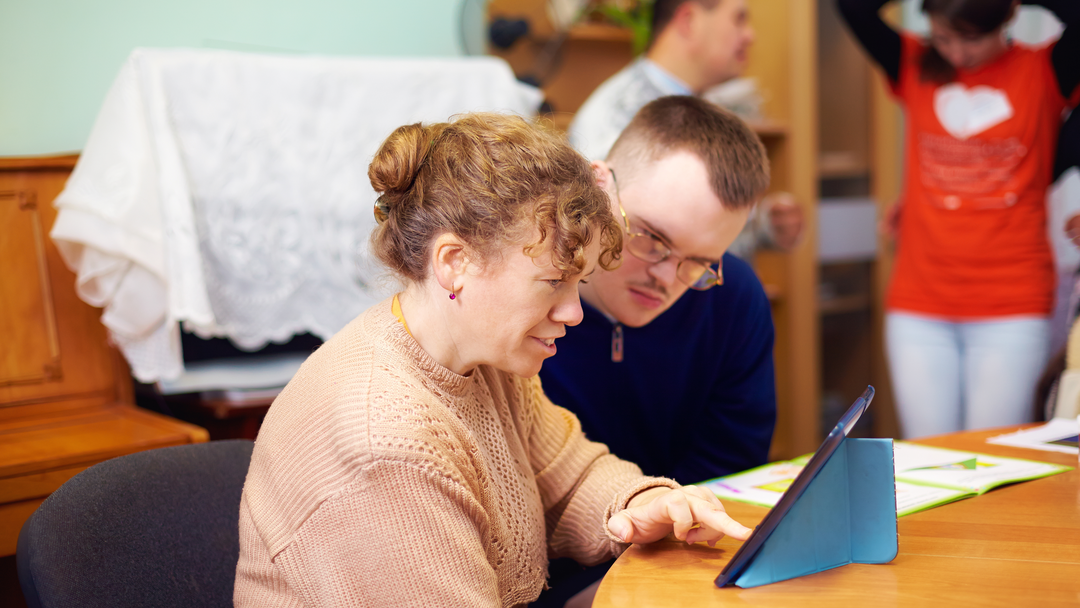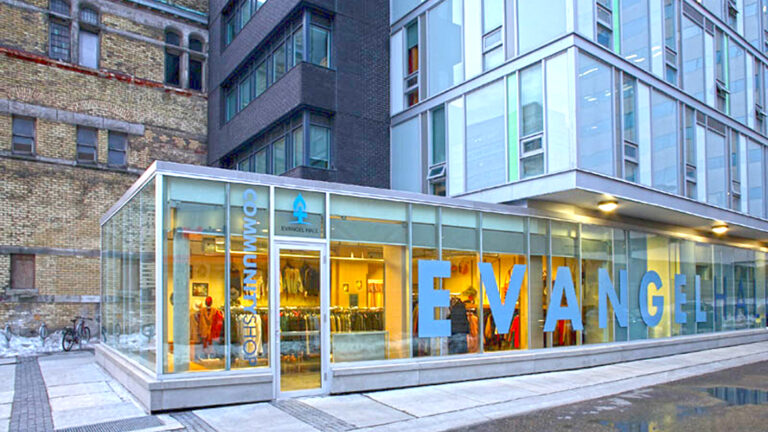Les personnes vivant avec un handicap intellectuel qui tentent de trouver leur place sur le marché de l’habitation peuvent facilement se sentir perdues, comme si elles se trouvaient dans un labyrinthe sans issue. La National Affordable Housing Corporation prépare un guide pour aider les locataires vivant avec une déficience intellectuelle, leurs soignants et leurs propriétaires à démystifier le processus, grâce au soutien d’une subvention de 50 000 $ provenant du Centre.
Les personnes en situation de handicap font face à des défis inédits au moment de se chercher un logement : contraintes financières, options limitées et discrimination consciente ou inconsciente. La situation est particulièrement critique pour les locataires vivant avec une déficience intellectuelle, qui habitent souvent dans des logements insalubres et qui sont à risque d’être victimes de propriétaires ou de gens du voisinage qui veulent profiter d’elles.
Selon Inclusion Canada, un « nombre disproportionné de personnes vivant avec des déficiences intellectuelles ont des besoins impérieux en matière de logement », ce qui veut dire que leurs habitations sont considérées comme étant inabordables ou inadéquates. Dans les faits, près d’une personne sur cinq âgée de plus de 15 ans et ayant des problèmes cognitifs vit dans un ménage ayant des besoins impérieux en matière de logement – ce qui est presque le double de la moyenne nationale.
Selon le document de recherche Women with Disabilities & Housing (« Les femmes en situation de handicap et le logement »), la discrimination en logement, bien qu’illégale, est fréquente. Les victimes « font face […] à des pratiques de ‘filtrage’ de la part des propriétaires, ce qui inclut ‘des évictions pour des comportements liés au handicap et l’incapacité de répondre aux besoins liés au handicap.’ Cela est aggravé par le manque de ressources ou de ‘pouvoir de négociation avec les propriétaires.’ »
Ces défis sont encore plus nombreux quand le locataire en question est une personne vivant avec une déficience intellectuelle. Au Centre de transformation du logement communautaire, nous savons que l’inclusion sociale est ce qui distingue fondamentalement le logement communautaire d’autres types de logement.
En accord avec notre engagement envers l’inclusion et la participation, le Centre a accordé 50 000 $ à la National Affordable Housing Corporation pour qu’elle produise et distribue un Guide de location pour favoriser l’inclusion sociale dans le milieu du logement abordable. Ce manuel a pour but de sensibiliser le public et de proposer aux propriétaires et gestionnaires immobiliers une approche unique, centrée sur les besoins des locataires, qui leur permettra de comprendre et d’héberger les personnes vivant avec un handicap intellectuel de façon plus inclusive.
« Le soutien du Centre nous aide à parvenir à une inclusion communautaire plus importante pour les locataires de Willowview Heights vivant avec des déficiences intellectuelles », affirme la présidente-directrice générale de la Corporation, Stacie Beever. « Nous avons hâte de partager les apprentissages, les connaissances et les meilleures pratiques que nous acquerrons avec ce projet avec les fournisseurs de logements et de services aux niveaux local, provincial et national, et ce, tout au long du projet. »
Un outil de prise en charge de soi
La NAHC a entamé la construction de Willowview Heights, un développement immobilier locatif mixte abordable de 72 unités à Saskatoon, en 2020. Le projet inclut six unités locatives abordables réservées pour des personnes à faible revenu ayant des déficiences intellectuelles, où pourront résider neuf personnes.
« Cette initiative en logement abordable représente un modèle vraiment nouveau et inspirant de logement et d’inclusion pour les personnes ayant des déficiences intellectuelles », explique Beever. C’est afin d’assurer une expérience de logement significative et harmonieuse pour les locataires ayant des déficiences intellectuelles, leurs soignants et les propriétaires que l’idée du guide est née. L’objectif du Guide est de faire en sorte que la participation des locataires soit significative, qu’elle reflète leur expérience et qu’elle augmente les chances de développer une relation positive avec les propriétaires.
Le projet est opportun, croit Beever. « Avec la pandémie de COVID-19, c’est encore plus important puisque plusieurs de ces locataires sont immunodéprimés et susceptibles de vivre de grands défis du point de vue de la santé mentale alors que la distanciation sociale et l’isolation est de mise. » Afin de s’assurer que le Guide soit juste, l’organisation a développé un partenariat avec Inclusion Saskatchewan, un pionnier dans la lutte pour l’égalité des personnes en situation de handicap.
« Nous espérons que cette ressource sera reconnue comme un outil concret de prise en charge de soi par les locataires ayant des déficiences intellectuelles. La NAHC et Inclusion Saskatchewan [travaillerons] avec les gens de leurs réseaux dans les milieux du logement, des [services sociaux] et des organisations à but non lucratif pour faire la promotion des résultats du projet et de son utilisation comme ressource », précise Beever.
La NAHC propose d’utiliser la subvention de 50 000 $, en plus de 10 000 $ provenant de ses propres fonds, afin de :
- Accroître et promouvoir l’accès à l’information;
- Renforcer les capacités par rapport aux décisions et responsabilités liées au logement ;
- Améliorer la communication entre les locataires, les propriétaires et le voisinage, de même que la compréhension et la résolution de problèmes (ex. : par rapport aux dommages, réparations, plaintes, sujets délicats, etc.);
- Réduire le nombre d’évictions et le risque d’itinérance;
- Augmenter la participation dans les décisions liées au logement et dans différents projets par la création d’un guide en langage simple pour les personnes vivant avec des déficiences intellectuelles;
- Documenter et souligner les réussites de cette initiative unique par et pour les locataires afin que les personnes vivant avec des déficiences intellectuelles dans d’autres communautés puissent en bénéficier.
« Nous sommes ravis de pouvoir commencer ce travail! », affirme Stacie Beever. « Nous croyons sincèrement que nos efforts pour documenter et partager les meilleures pratiques à travers cette initiative créeront des effets bénéfiques dans d’autres communautés en ce qui concerne l’offre de logements inclusifs et avec services de soutien pour les personnes ayant une déficience intellectuelle ».



